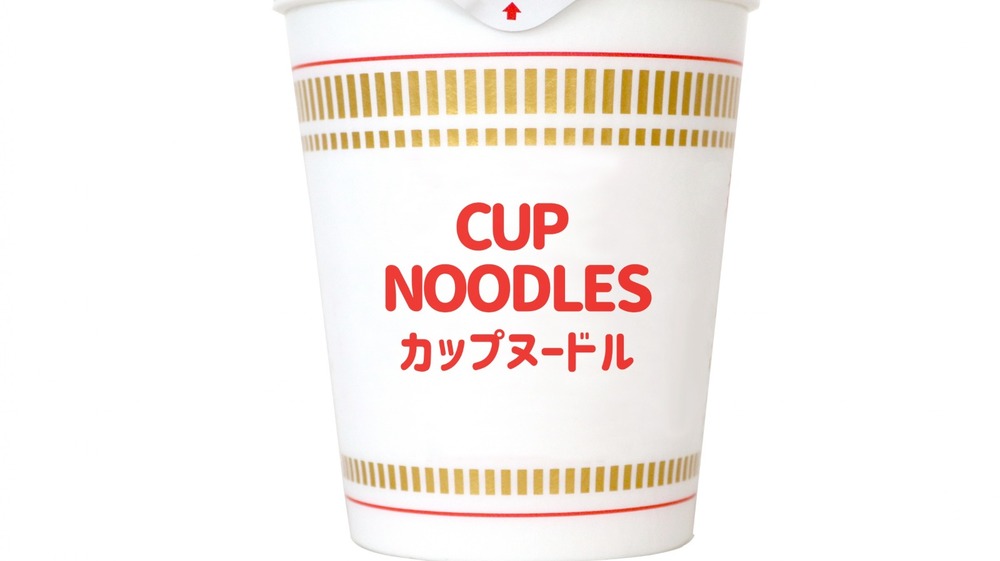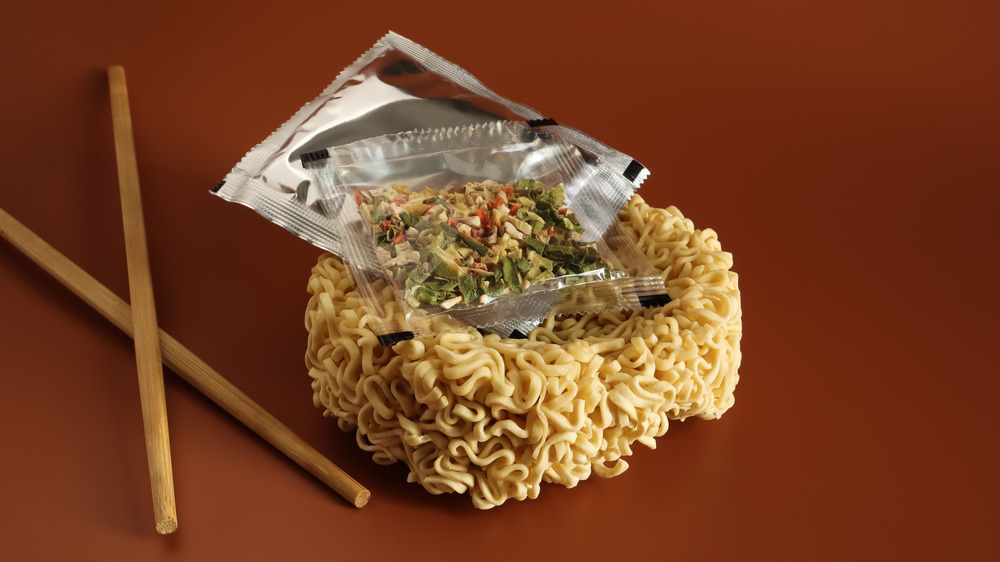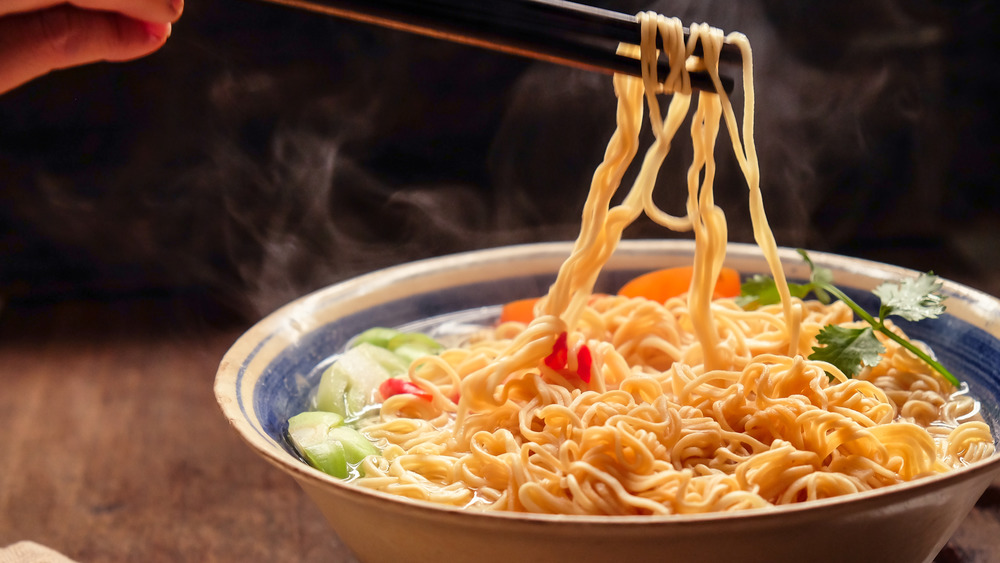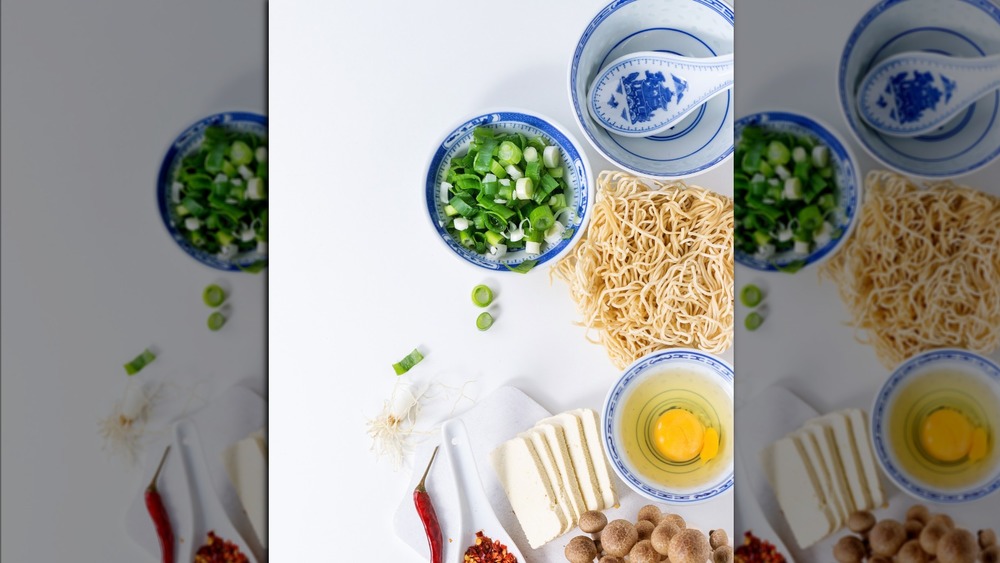Why You Should Rethink Eating Instant Ramen
Instant ramen is the stuff of, well, not exactly legend – more like numerous jokes about starving college students. It's always been a somewhat hipper version of bottom-dollar cuisine than, say, pork and beans or bologna sandwiches, thanks to its slightly more exotic pedigree. Boil up a pack of this and you can at least pretend you're dining on something vaguely Asian. Another point in its favor is the fact that it's not only shelf-stable but if you get the kind that comes in a Styrofoam cup, all you need to cook it is hot water. (Cup noodles was one of the few things you could cook in a dorm room back in the day when hot pots – not the yummy Chinese restaurant kind, but the cheap appliance sold by Walmart kind – were the only type of dorm-room cooking equipment you could get away with. Things were tough back in the olden days.)
Nutritionist and chef Robin Miller has some bad news about this poverty pantry staple, telling Mashed, "Instant ramen might be one of the cheapest foods you can consume, but it's also one of the least nutritious." She says most types of ramen have similar ingredients: flour, salt, palm oil, flavorings, and monosodium glutamate.
What's wrong with instant ramen
While Miller says that "at first glance, [instant ramen] appears to be a suitable, low-calorie choice," she points out that "most packages are intended to serve two." This means that while a single serving may contain about 188 calories, 27 grams of carbohydrate, 7 grams of fat, and 861 milligrams of sodium if you eat an entire package (a not unlikely proposition since they're not all that sizable), you're looking at 376 calories, 14 fat grams, and a whopping 1,722 milligrams of sodium. As the U.S. Food and Drug Administration recommends you not exceed 2,300 mg of sodium per day, a packet of ramen will put you dangerously close to going over the top unless you dine on nothing else but raw fruits and veggies for the rest of the day. As Miller warns, "high salt intake may increase blood pressure and promote other health issues."
Miller is also not too thrilled about the MSG contained in the seasoning packets of most brands of noodles. While this flavoring agent, once thought to be dangerous, is now "generally recognized as safe" by the FDA, Miller's still a bit suspicious of it since, as she tells us, "its potential effects on health remain controversial."
What's not so bad about it
Even if you do go hog wild and eat both halves of the ramen packet or an entire styrofoam cupful, it's still not that much of a diet buster. After all, it has about the same calories as a single, plain Taco Bell bean burrito, but a double portion of ramen will probably do a much better job of filling your belly (not to mention running a few bucks cheaper)
Miller also has some additional good news as regards the nutritional benefits of instant ramen, which is to say that it has some (just a few). According to her, "some varieties dish up a decent amount of iron, manganese, folate, and B vitamins." She advises reading the labels to see which brands and flavors edge out the competition, nutrient-wise, but still says that "you're likely to get more nutrients from a can of good-quality, vegetable-rich soup" assuming your ramen noodle budget can be stretched to cover "good quality" anything.
How you can give your ramen a healthy makeover
Miller says that when you're shopping for ramen, assuming that price isn't the only object, you should be able to find some new and improved (and doubtless much more expensive) noodle varieties with more protein and nutrients and less fat and sodium.
Another, tastier and maybe even cheaper option to upgrading your noodly experience involves add-ins. Miller says to "give your instant ramen a nutritious makeover by adding protein, fiber, and nutrients," and suggests that you experiment with veggies, skinless chicken, and (of course) the incredible edible egg. You can also add in spices and seasonings - soy and Sriracha, if you want to stick with an Asian theme, or try Cholula or salsa for some fusion ramen.
You'll also definitely want to try the secret ingredient recommended by Korean-American chef and food truck entrepreneur Roy Choi: sliced cheese! It's also cheap, but it does have protein and calcium and as long as you avoid buying the terrifyingly non-melty (and non-cheesy) Dollar Tree brand, it should meld with the noodles to create a bowl of creamy goodness that's way too good for all those suit-wearing, prime rib-eating expense account types, anyway.



